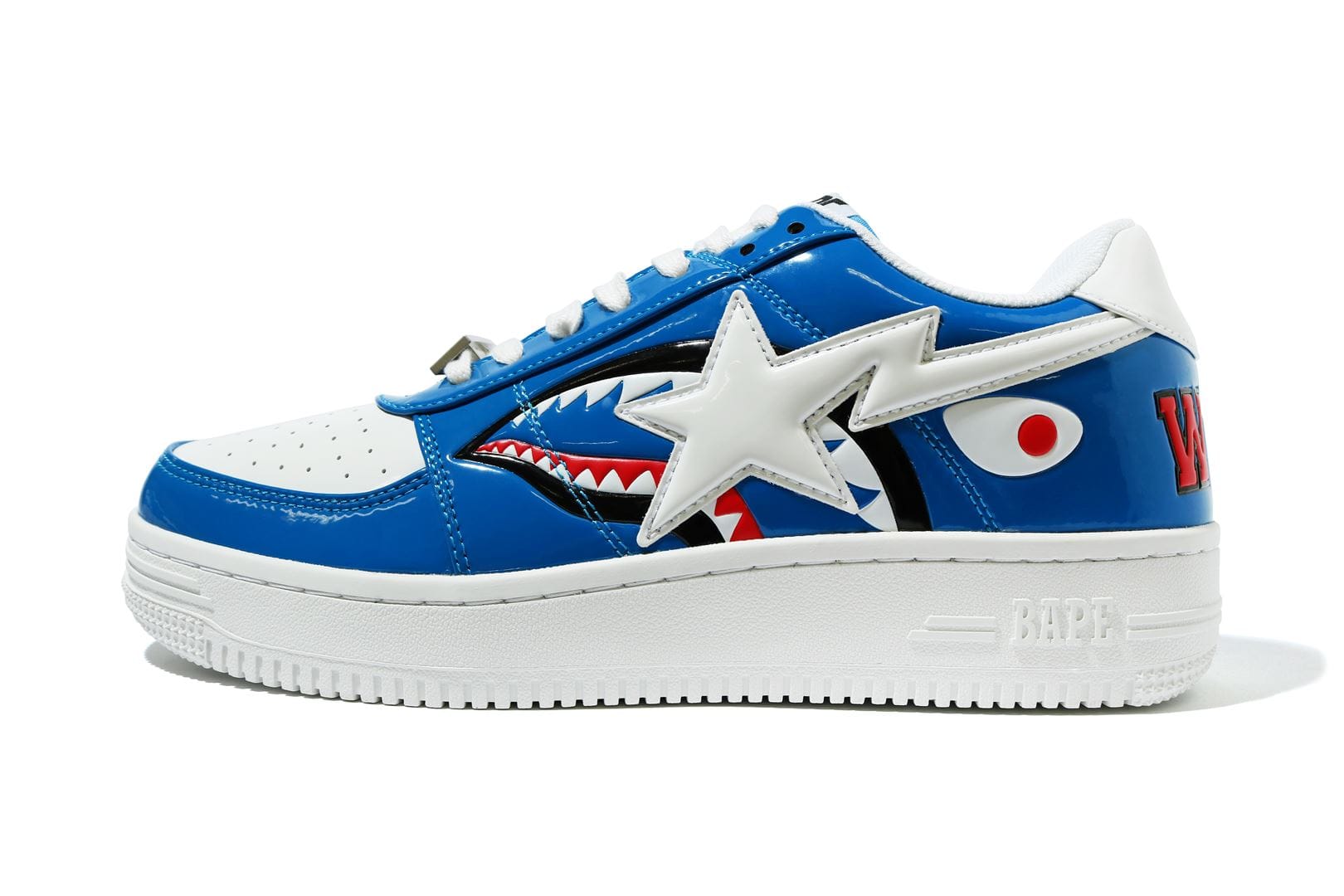The BAPESTA sneaker is more than just footwear; it is a cultural symbol that represents the intersection of fashion, hip-hop, and Japanese streetwear. Born from the creative mind of Nigo, founder of A Bathing Ape (BAPE), the BAPESTA first appeared in the early 2000s and quickly captured global attention. With its bold design inspired by the Nike Air Force 1, star-shaped logo, and vibrant colorways, the BAPESTA carved its own unique niche in sneaker culture.
Origins of the BAPESTA Design and Influence
The BAPESTA was initially introduced as part of BAPE’s broader lifestyle brand that revolutionized Japanese streetwear. Inspired heavily by American hip-hop fashion and the silhouette of the Nike Air Force 1, the BAPESTA adopted a similar shape but replaced the Nike Swoosh with a shooting star logo called the “STA.” This symbolic redesign instantly gave the sneaker its own identity. Nigo’s intention was never to copy but to create something equally iconic with Japanese craftsmanship and pop culture flair.
How BAPESTA Became a Symbol of Hip-Hop
One of the key reasons the BAPESTA achieved international acclaim was its rapid adoption by major hip-hop artists. During the early 2000s, American rappers like Pharrell Williams, Kanye West, and Lil Wayne began sporting BAPESTAs in music videos, concerts, and photo shoots. These celebrities admired the shoe’s originality, eye-catching colors, and exclusivity. This endorsement elevated the sneaker from a niche Japanese streetwear item to a globally coveted fashion piece. It bridged the gap between East Asian fashion aesthetics and Western urban culture.
Colorways, Patterns, and Limited Releases
What truly set the BAPESTA apart from other sneakers at the time was its bold use of colors and materials. The brand was known for experimenting with patent leather, camo prints, neon shades, and cartoon-themed collaborations. The unpredictability of each drop made BAPESTA a treasure hunt for collectors. Unlike conventional brands that stuck to limited palettes, BAPESTA embraced vibrant creativity and visual risk-taking. These choices made the sneaker a canvas of self-expression rather than just functional footwear.
The Role of Exclusivity in BAPESTA’s Hype
BAPE’s strategy of scarcity fueled the desire for BAPESTAs. The sneakers were not mass-produced and were mostly available at select BAPE stores or high-end boutiques. This exclusivity was a deliberate move by Nigo to maintain the brand’s premium image. It created a sense of urgency among buyers, who would often camp out or pay resell prices just to own a pair. The limited quantity of each colorway or collaboration increased the sneaker’s collectible status and solidified its reputation as a status symbol.
Collaborations That Defined an Era
BAPESTA’s legacy was also built through high-profile collaborations that fused fashion with pop culture. BAPE teamed up with names like Marvel, Coca-Cola, SpongeBob SquarePants, and even luxury brands to create unforgettable BAPESTA variations. These collaborations allowed the sneaker to transcend fashion and enter realms of animation, cinema, and commercial art. Each partnership added a new chapter to the BAPESTA story, making every pair feel like a wearable piece of history.
Global Expansion and the Western Market
Though it started in Japan, BAPESTA’s appeal soon reached global audiences. The sneaker began appearing in major fashion cities like New York, London, and Paris. Pop-up stores, online availability, and the growing presence of influencers helped BAPESTA cement its position internationally. BAPE’s connection with hip-hop culture acted as a passport to Western fashion markets, where youth and sneakerheads were hungry for something different from traditional American brands.
The Resale Market and Sneaker Collectors
Today, BAPESTAs remain highly sought after in the resale market. Vintage pairs, rare collaborations, and early 2000s editions often fetch high prices on collector platforms. Sneakerheads consider BAPESTA not only for its aesthetics but also as an investment. The sneaker’s fluctuating value depends on factors like colorway rarity, condition, and historical significance. This economic aspect has added another layer of intrigue and value to the BAPESTA brand.
Evolution in the Modern Streetwear Era
Over the years, BAPESTA has evolved both in design and in cultural relevance. While the brand continues to honor its original silhouette, it has also introduced modern upgrades such as premium materials, updated soles, and contemporary collaborations. BAPE’s recent collections maintain the same loud and daring personality, but now cater to a broader global audience. Despite increasing competition from newer sneaker brands, BAPESTA retains its legendary aura because of its originality and historical impact.
BAPESTA’s Legacy in Sneaker Culture
The BAPESTA stands as a lasting icon in the world of sneakers. It represents a fusion of Japanese creativity and American street fashion. Unlike many trend-based sneakers, BAPESTA has achieved longevity because it never followed the Fashion. It created its own universe where art, fashion, and pop culture coexist. For many, owning a BAPESTA is not just a fashion choice but a cultural statement—a nod to individuality, nostalgia, and rebellion.
Conclusion: Why BAPESTA Still Matters Today
In an ever-changing landscape of fashion where trends come and go rapidly, the BAPESTA remains a timeless symbol of self-expression and exclusivity. It helped shape the modern sneakerhead culture and influenced how streetwear is viewed in both Eastern and Western contexts. From its explosive debut in Harajuku to its appearance on global runways and music stages, the BAPESTA has proven that it is not just a sneaker—it is a movement.
